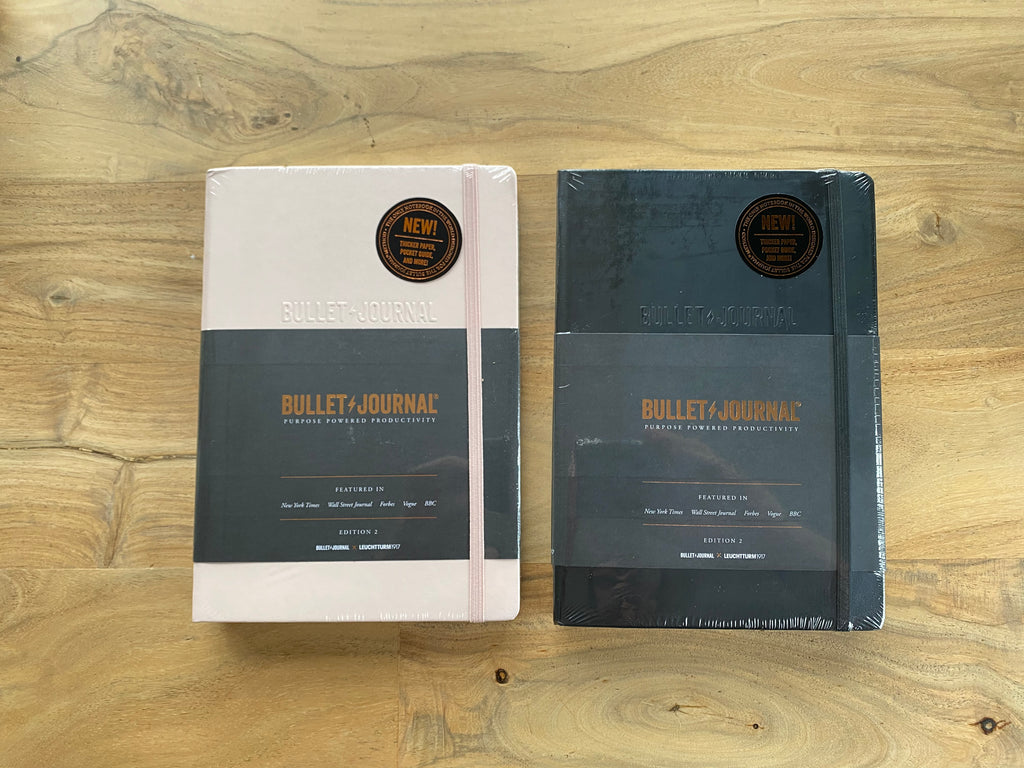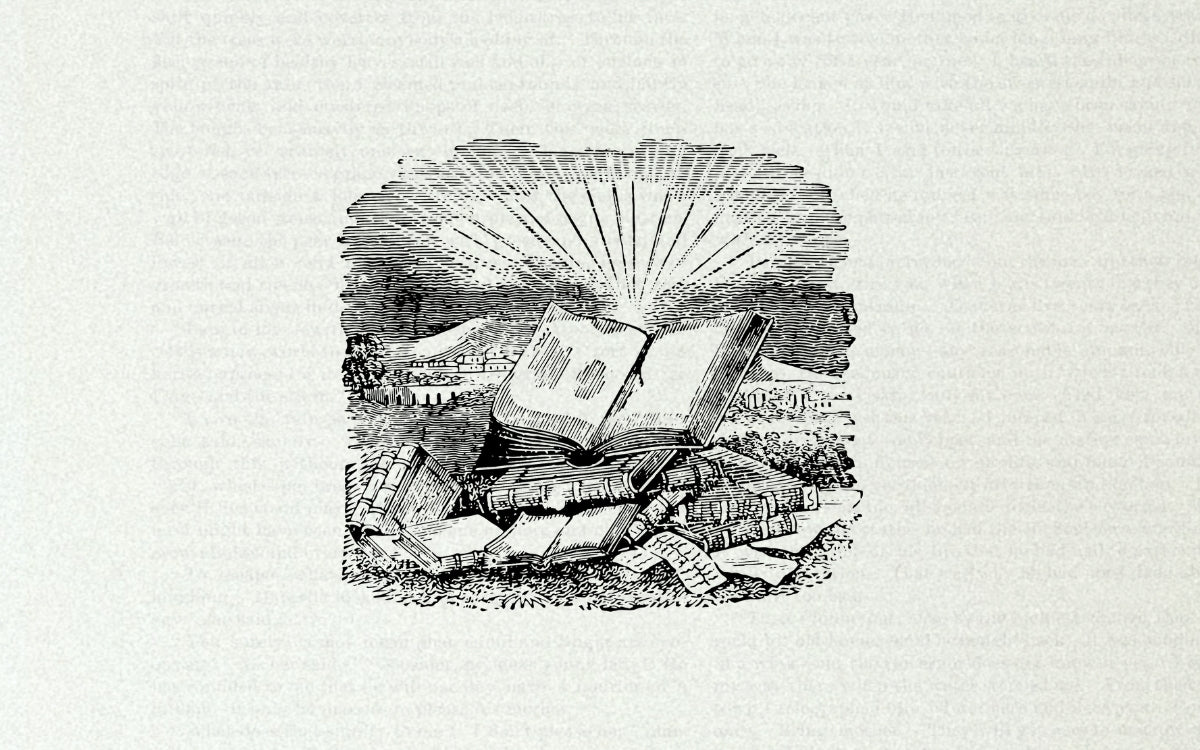We think and talk a lot about the Bullet Journal as a method, but almost just as important as the method itself is the physical tool that we use together with it. The tools we use and the perspectives that we have affect the ways we interact with the world, so it’s only natural to choose our first Bullet Journal carefully.
In this article, we will explore essential factors for choosing your Bullet Journal notebook. Some factors to consider when buying your first Bullet Journal are notebook size, paper quality, page layout, and additional features.
We'll delve into the pros and cons of different options, so you can get an idea of what will work best for you whether you prefer a traditional analog or digital Bullet Journal.
By the end of this guide, you'll have a clearer understanding of what to look for in a Bullet Journal that aligns with your unique style, goals, and preferences so that suit why you Bullet Journal.
Picking out a notebook for your first Bullet Journal

Notebook Sizes
The typical A5 journal size serves most people’s Bullet Journaling needs, but you might want to experiment with the sizes you use. Consider the following options:
- Pocket-sized notebooks are highly portable but have limited space for detailed entries. These are best for Bullet Journaling for when you travel or just need a more discreet option.
- A5 notebooks strike a balance between portability and writing space, accommodating various layouts and trackers.
- B5 notebooks offer larger pages, letting you keep more entries on the same page. This can be advantageous if you rewrite your entries a lot or have tons of entries in one day, but extra space comes at the cost of portability.
- A4 notebooks provide the most writing space but are better suited for stationary use. However, they are bulky and aren’t as portable as smaller sizes. Not to mention, you might not even need a Bullet Journal that big.
Paper Thickness (GSM)
The paper's weight, often measured in GSM (grams per square meter), is an important consideration when choosing a notebook for Bullet Journaling. The Official Bullet Journal notebook features 120 GSM paper.
The GSM value indicates the thickness and quality of the paper, which can affect how various Bullet Journaling tools, such as pens, markers, or watercolors, perform on the pages. Here's a breakdown of different GSM options and their implications for the Bullet Journal method:
Lighter GSM (Around 70-90 GSM): Notebooks with lighter GSM paper tend to be thinner and more lightweight. While they are often more affordable, they may be prone to issues like ink bleeding, ghosting (visible impressions of the previous page's content), or show-through (the visibility of the content from the opposite side of the page). This can impact the overall appearance and usability of the Bullet Journal, especially if you prefer using markers, fountain pens, or other mediums that may bleed or feather on thinner paper.
Medium GSM (Around 90-120 GSM): Notebooks with medium GSM paper strike a balance between thickness and portability. They offer better resistance to bleeding and show-through compared to lighter GSM options. Medium GSM paper is generally more versatile and compatible with a wide range of writing tools, making it suitable for most Bullet Journaling needs. It allows for more creativity, including the use of markers, highlighters, and light watercolor washes, without significant issues.
Higher GSM (Around 120-160+ GSM):Notebooks with higher GSM paper are thicker and more substantial. They provide excellent resistance to bleeding and show-through, making them ideal for those who prefer using heavier markers, brush pens, or even heavy watercolor techniques in their Bullet Journal. The pages feel sturdier and are less likely to warp or buckle under wet mediums.
Dotted, Lined, or Grid
You can Bullet Journal with a blank paper notebook, but if you want more structure, you can use notebooks with dotted, lined, or grid paper. While you might prefer to flexibility of blank paper, consider the differences between these three paper layout types:
Dotted: Dotted layouts feature a series of evenly spaced dots on each page, forming a subtle grid-like pattern. Dotted pages provide a versatile and unobtrusive guide for creating various Bullet Journal elements, such as calendars, trackers, and layouts. The dots allow for precise spacing and alignment while maintaining the flexibility to draw lines, shapes, or free-form designs. Dotted layouts are particularly popular in Bullet Journaling due to their adaptability and minimal visual interference.
Lined: Lined layouts feature horizontal lines running across each page, mimicking traditional ruled notebook paper. Lined pages provide a structured framework for neat and consistent writing. They are helpful for maintaining legibility and can be useful when writing detailed notes, creating to-do lists, or organizing thoughts in a linear fashion. While lined layouts may offer less creative freedom for design elements, they provide a sense of order and make it easier to write in straight lines.
Grid: Grid layouts consist of a network of equally spaced horizontal and vertical lines, forming small squares or rectangles. Grid pages offer a structured framework that promotes organization and precise placement of elements. They are well-suited for creating tables, charts, graphs, and intricate designs. Grid layouts help maintain symmetry, assist in drawing straight lines, and support precise measurements. They are useful for planning, tracking habits, or sketching layouts that require careful alignment.
Using a Regular Notebook for BuJo
You can start a Bullet Journal with a regular notebook because the method is not tied to any specific notebook format. Unlike planners, a Bullet Journal does not need to be pre-printed. The beauty of the Bullet Journal method is the level of flexibility and customization that it offers. Many Bullet Journalists start off using notebooks they already had at home and there certainly wasn’t an official Bullet Journal notebook when the method first came to be.
That said, paper quality is what makes or breaks your experience of using a notebook when Bullet Journaling so you may want to opt for paper that is 120 GSM or close to that to avoid ghosting and bleeding.
Digital Bullet Journal vs. Analog Bullet Journal
Digital Bullet Journaling offers portability and accessibility, allowing you to have your journal on any device. It’s also easy to integrate with workflows because you can easily import and export files from a digital Bullet Journal. Plus, because of automation features, it’s easier to organize the information that you have in your journal.
So does analog Bullet Journaling still have an edge? For many Bullet Journalists, the analog aspect of the Bullet Journal is a feature. It’s limiting so it forces us to think about what information and tasks truly matter, limiting the noise we introduce into our lives. With limits come less distractions – there are no apps to take us away from planning and evaluating whether what we’re doing is important to us.
Ultimately, you choose whether you want to use a digital or analog Bullet Journal, but it doesn’t need to be an either/or choice. You can integrate digital tools to help you with analog Bullet Journaling.
Where to get a Bullet Journal notebook
If you're ready to get a Bullet Journal notebook, you can check out the world's only Official Bullet Journal notebook via the Bullet Journal shop. The Official Edition 2 Bullet Journal features 120 GSM sustainably sourced paper. Each page is organized into subtle but clear dots that let you divide your Bullet Journal pages into sections without making your layout feel crowded. The Edition 2, as well as other Bullet Journal iterations, come with a guidepack and a sticker sheet to help you get started with Bullet Journaling in 10 minutes or less.





